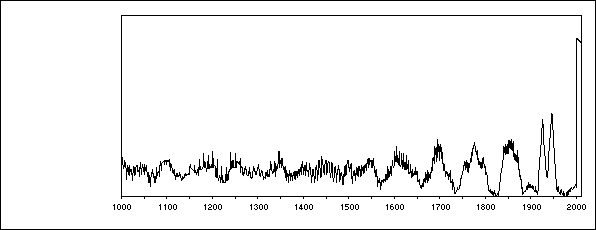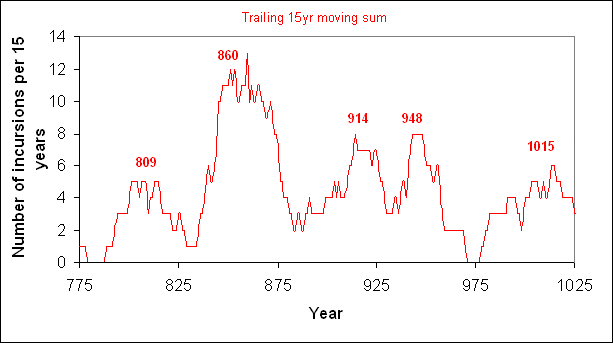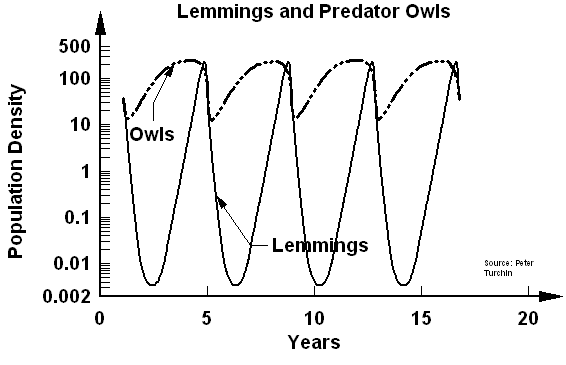> The "oscillation algorithm" that made the curves is the Excel
> curve feature. There is nothing more I can say. If you don't like
> the curves I reposted it with that feature turning off. As you can
> see it is simply a plot of a handful of points. Each point is at a
> nominal peak and trough according to the 4-year cycle. A crude
> rule of thumb is buy in the fall of non-presidential election
> years (cycle troughs) and sell at the end of presidential years
> (cycle peaks). Since the 2002 trough was so deep I figured the
> 2006 dip would be small and not worth trying to time so I left it
> out. And as it happened there was no signficant trough this year.
> Cycle bottoms occur on schedule only about 70% of the time (tops
> are even less reliable) so the graph is not intended to be a
> detailed l projection (nor was it presented as such in my book)
> but just an example of what an idealized secular bear market looks
> like.
> And as luck would have it, after being dead in 2002 and 1998, the
> 4-year cycle bottom missed this year (the dip--such as it was--was
> in June). But it was so small it would be impossible to time it.
> My goal is to approximately time the BIG moves like the one from
> 2002 to now (and which should continue to go up for maybe 2-3
> years) and then the big drop around the end of the decade and
> ignore the little moves.
> The levels come from projected bull market peaks and troughs based
> on past history using my P/R measure. More details can be found in
> my books and in an article on
www.safehaven.com which I just
> submitted today and should be out in a few days.










